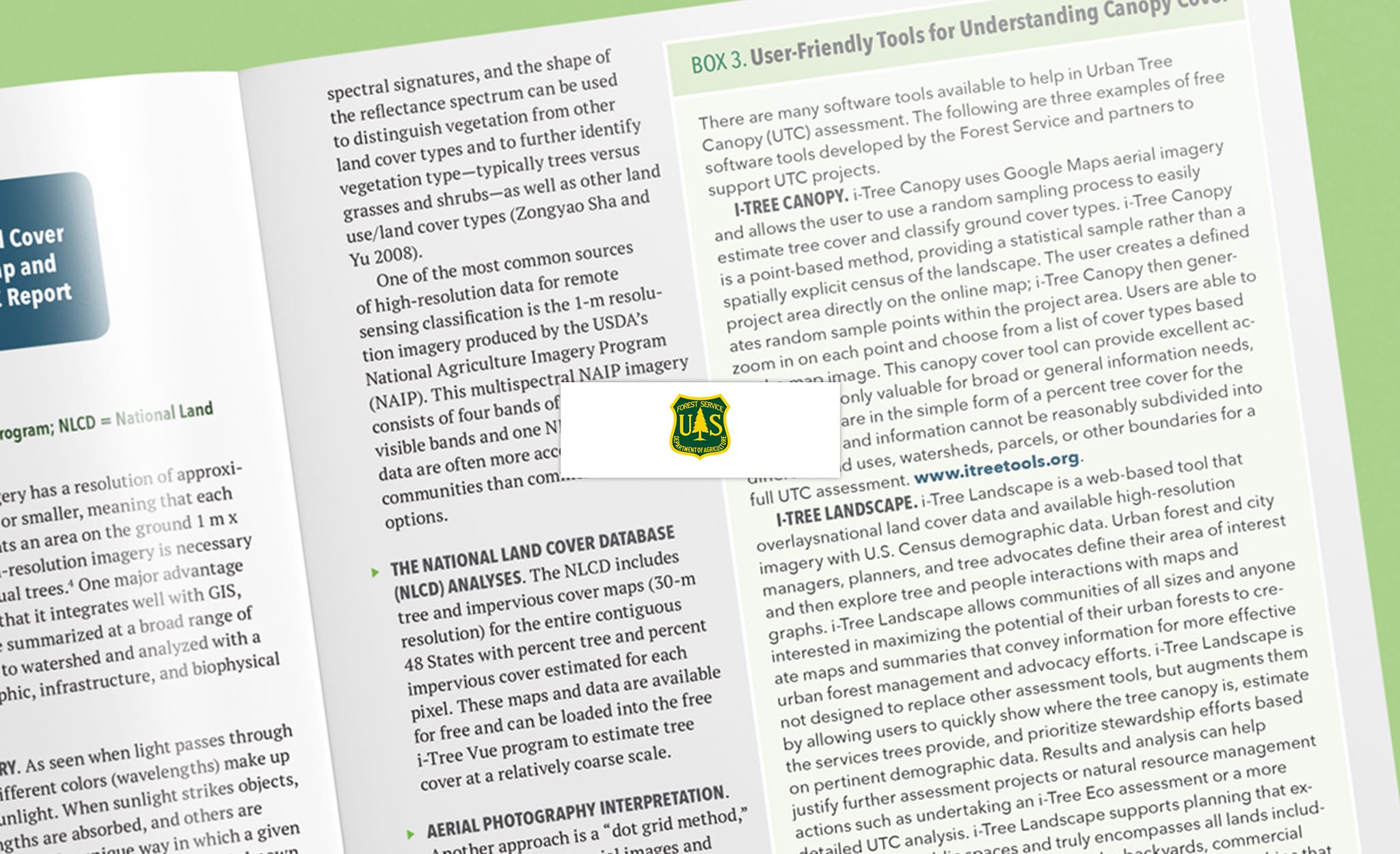Developed by: USDA Forest Service
Launched in 2006; Updated in 2019.
Why Use the Tool
The Urban Tree Canopy assessments report highlights the approaches, methods and data sources used in urban tree canopy assessments. Urban tree canopy assessments, which measure the extent of the tree canopy, can help communities understand their total tree and forest resources and establish tree canopy goals as part of broader urban greening and sustainability initiatives. The assessments tend to be most useful when combined with other data such as heat island maps or socioeconomic and health data.
Recommended Tool
Jarlath O’Neil-Dunne, Director of University of Vermont Spatial Analysis Lab and co-appointment with USFS: jarlath.oneil-dunne@uvm.edu
Input Data Required
LiDAR or high-resolution satellite imagery, plus additional data such as land-use maps, building footprints; may later be combined with additional city data layers
Outputs
Workplan and urban forest management plan, plus strategies for adaptive management
Past Use Cases
Case studies from U.S. cities are included in the report, such as from Baltimore, New York City, and Los Angeles.
Case Study
Understanding Canopy Cover in Los Angeles
In 2006, the City of Los Angeles, USA set an ambitious goal: plant 1 million trees. The initiative, “Million Trees LA” (MTLA), is a part of the city’s larger climate action plan, which strives to reduce greenhouse gas emissions.
Before the city could plant 1 million trees, officials needed to know where to put them—or if there was even space. To prepare for the plantings and to augment LA’s urban forestry program in general, researchers with USDA Forest Service assessed tree canopy cover, using three types of remotely sensed data and additional GIS layers. City and district boundaries, parcel boundaries, and other land-use/land cover information was also incorporated.
From the analysis, researchers determined that existing tree canopy cover was 20.8 percent. With potential space to add at least 2.5 million trees available, the goal of adding 1 million trees seemed reasonable. The new city target for canopy cover was set at 26 percent. During the assessment, researchers also used i-Tree Eco and Streets to quantify the benefits provided by the additional trees, including those related to air and water quality. These benefits were estimated to be valued at between $1.3 and $1.9 billion USD over 35 years, depending on level of tree mortality.

Source: McPherson, E. G., Simpson, J. R., Xiao, Q., & Wu, C. (2011). Million trees Los Angeles canopy cover and benefit assessment. Landscape and Urban Planning, 99(1), 40–50.











